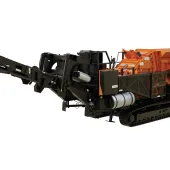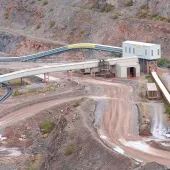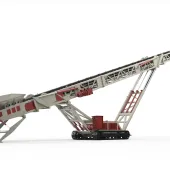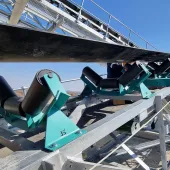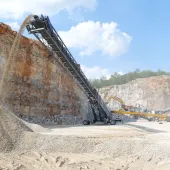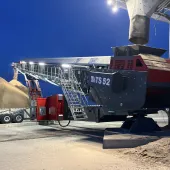Finding Conveyor Belts to Handle the Destructive Forces of Quarries
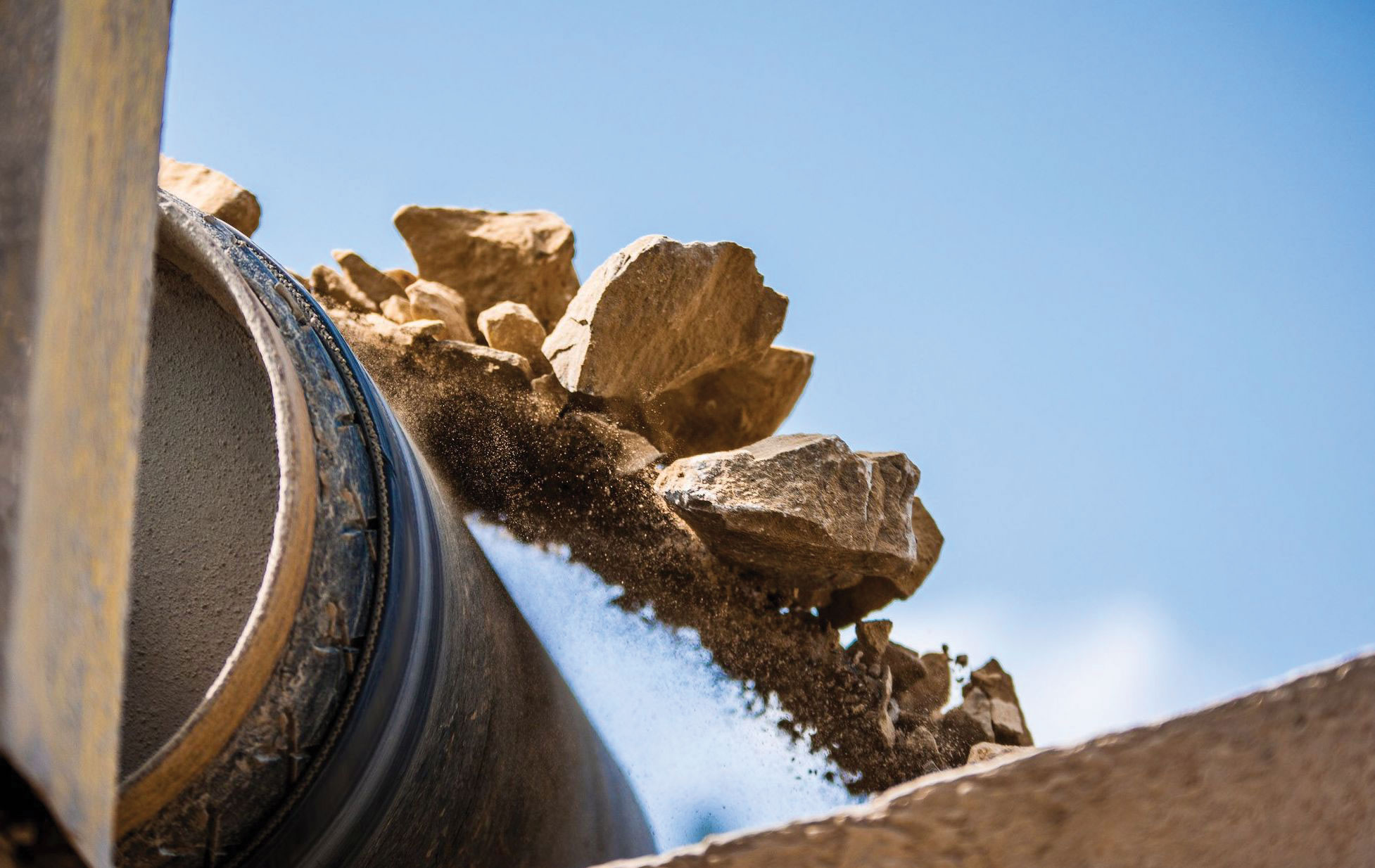
First published in the April 2021 issue of Quarry Management as Mission Impossible?
Is it possible to find a conveyor belt that can handle the destructive forces that cause ripping, tearing and impact damage? Rob van Oijen, manager of application engineering at Netherlands-based Dunlop Conveyor Belting, looks at this all-too-common problem and explains how even the most destructive forces can be overcome
Conveyor belts are critical components within the mining and quarry industries. They are surprisingly complex and their reliability and efficiency can make or break an operation. Even the strongest, heaviest multi-ply and steelcord belts can be punctured and ripped by foreign objects and sharp rocks becoming trapped. A belt can quite easily be ripped apart longitudinally over its entire length in a matter of minutes. The cost of repairing and replacing belts, both in monetary terms as well as lost production, can have very serious consequences indeed. Despite this, most manufacturers make little or no mention of the rip and tear resistance of their belts.
Rip and tear resistance – testing
The ability to withstand the forces that rip and tear belts is often more important than any other physical attribute. This is especially true when it comes to quarrying and mining. A ‘rip’ is best described as what happens when a sharp object punctures the belt and cuts the belt lengthwise as it is pulled against the trapped object. In contrast, a ‘tear’ is what happens when a section of belt is pulled apart in opposing directions, much like when a telephone directory is torn apart by hand as a feat of strength.
Surprisingly, despite its significance as a key performance indicator (KPI), there are currently no internationally accepted test methods or standards for testing rip resistance, which is perhaps one reason why belt manufacturers rarely mention the subject. However, Dunlop regard rip and tear strength as very important KPIs. Their laboratory technicians pull sections of belt through a right-angled piece of metal under extreme force and carefully measure and record the level of force exerted.
Unlike rip resistance, an international standard for tear strength does exist. The ISO 505:2017 test method measures the propagation resistance of an initial tear in textile conveyor belts, either in full thickness or the carcass only. The test is intended for application to multi-ply (fabric) belts in installations where there is a risk of longitudinal tearing.
Although it is a defined method of testing there are no standardized performance requirements. The test, often referred to as the ‘trouser test’, basically consists of mounting two cut ends of a test piece of belting in the jaws of a tensile testing machine. An initial tear is made in the test piece, which is then pulled apart in opposing directions. The force necessary to propagate the tear is then measured. Examination and analysis of the multi-peak tear resistance test traces is made in accordance with ISO 6133.
Finding the best solution
Because of the huge disparities between the types of materials being conveyed, the actual design of the conveyor systems and their varied working environments, there is no ‘silver bullet’ answer to the damage caused by ripping, tearing and impact. In the author’s experience, it is probably easier to start with what will almost certainly not be the answer to the problem, which is the common misconception that making the belt thicker by increasing the cover thicknesses and/or the number of plies will help.
The fact is that belts that are too thick for the design of the application can cause problems such as excessive rigidity (lack of troughability) and steering and handling difficulties. The same applies to increasing the tensile strength. Especially in Eastern Europe, for some reason, it is not uncommon to see belt specifications of 1000/6 10+4 or even heavier. One recent example was where a 1000/5 belt had been fitted to a conveyor that had only a 22m center-distance. Whenever you see specifications like these, you can be pretty sure that there is an underlying problem with ripping or tearing or impact damage and in some cases all three.
To the uninitiated, another answer might appear to be to replace the multi-ply belt with a steelcord belt, but this is another ‘solution’ that is extremely unlikely to work. Conveyors using steelcord belts have to be specifically designed. Because of their innate tensile strength and low elongation (stretch), steelcord belts are really only suited to conveying over longer distances. In any case, their Achilles heel is that although the actual steel cords themselves are very strong, they cannot prevent a trapped foreign object from penetrating through the rubber covers, between the cords, and ripping the belt longitudinally. In one such incident, a wooden broomstick became trapped at the conveyor head. It penetrated a steelcord belt and ripped 4km of belt from end to end.
Engineered for the task
For multi-ply belts on conveyors where ripping and tearing is a problem, the only genuinely practical solution is to fit a conveyor belt that has been specifically engineered for the purpose. Such belts can have several times the resistance against ripping and tearing and can cope with the impact of heavy objects, such as large rocks falling from a high drop height, much more effectively compared with belts that use a conventional fabric ply construction.
Belts that have been engineered to resist ripping, tearing and impact use uniquely designed fabric plies that allow the nylon strands to stretch. As the trapped object is being pulled through the belt, the strands of the special ply construction gather together into a bundle that can eventually become strong enough to stop the belt.
Strange as it may seem, special synthetic plies are usually more effective than steel when it comes to actually minimizing the length of a rip. Two of the best examples are Dunlop UsFlex and Dunlop Ultra X. Both totally unique to Dunlop and both belt types have at least three or more times the resistance to ripping and tearing compared with a conventional belt.
Using breaker plies to increase rip resistance
For steelcord belts, the best solution tends to be the use of breaker plies, which provide a significantly increased resistance against longitudinal ripping. Ultimately, the use of breakers is one of damage limitation.
The breaker ply performs two functions. First, it can help prevent the penetration of the belt by a foreign object. Secondly, it acts as a barrier if an object does actually penetrate between the steel cords and starts to rip along the length of the belt. Breaker plies are embedded in the rubber covers during the manufacturing process. There are numerous types and strengths of breaker used. The lighter weight versions are designed to simply absorb and dissipate energy whereas stronger, heavier weight breakers can actually stop the belt and limit the amount of damage even more effectively. These are commonly referred to as ‘Ripstop’ breakers.
Not worth the sacrifice
Rather than look for belts that are capable of handing their demands, many operators decide to opt for what they see as the cheaper option by fitting low-grade, ‘sacrificial’ belts that have to be repaired and replaced with frightening regularity.
However, when the cost of incessant repairs, the fitting labour costs and, most of all, the lost production is added to the cost of replacement belt after replacement belt, it very rarely proves to make economic sense.
- Subscribe to Quarry Management, the monthly journal for the mineral products industry, to read articles before they appear on Agg-Net.com


